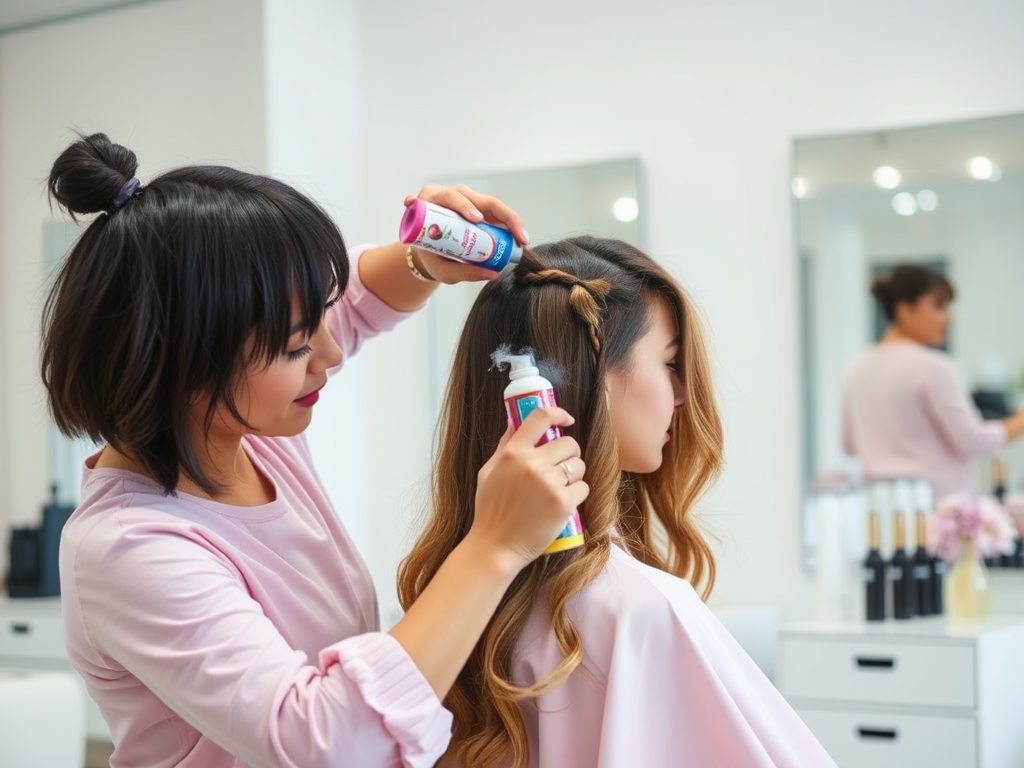Hair mousse has become a staple in the toolkit of both professional stylists and everyday users, celebrated for its ability to create stunning hairstyles with ease. In a world where appearance matters, understanding the products we use is crucial for achieving desired looks and maintaining hair health. Mousse, a light, airy foam, offers a unique combination of flexibility and hold that is often unmatched by other styling agents. This article explores the science behind hair mousse, diving into its ingredients and benefits. Knowing what goes into your mousse not only empowers you to make informed choices but can also elevate your hairstyling game to new heights. Let’s unravel the layers of this beloved product and discover what makes it so effective.
What is Hair Mousse?

At its core, hair mousse is a versatile styling product designed to add volume, texture, and manageability to various hair types. Typically available in an aerosol can, it dispenses as a foam that can be easily spread throughout the hair. The formulation of mousse allows it to provide lightweight hold without the stiffness or heaviness often associated with gels or waxes. Users appreciate how mousse can enhance natural curls or create waves while maintaining a soft finish. Moreover, the application process is user-friendly, making it accessible for individuals with varying levels of hairstyling expertise. Whether aiming for a casual look or something more polished, mousse serves as an essential companion in achieving great hair.
Key Ingredients in Hair Mousse

Understanding the ingredients that compose hair mousse gives insight into its effectiveness. On the market, you’ll find numerous formulations, each containing a unique blend tailored to different hair needs. Below are some common ingredients that contribute to the performance of hair mousse:
- Polymers: These are the key agents that provide styling hold and help maintain volume.
- Conditioning Agents: Ingredients such as silicones and other emollients that enhance hair softness and manageability.
- Humectants: These ingredients attract moisture, helping to hydrate the hair and prevent dryness.
- Alcohol: Often used as a solvent that helps with drying time, although it can be drying for some hair types.
Polymers
Polymers play a significant role in the structure and performance of hair mousse. They form a film over the hair strands, providing hold and preventing curls from falling flat. This is especially advantageous for people with fine or straight hair that tends to lose style quickly. Through the use of various types of polymers, manufacturers can adjust the level of hold that a mousse provides, creating options for different styling needs. Beyond just hold, these polymers can also add texture, enhancing the overall appearance of hairstyles.
Conditioning Agents
Incorporating conditioning agents in mousse formulas is crucial for promoting hair health. These ingredients help to smooth the cuticle of the hair, resulting in a shinier and more conditioned look. They also play a part in combating frizz, which is especially beneficial in humid environments. Furthermore, conditioning agents ensure that the hair remains soft and flexible, which is important when styling. Users can enjoy the benefits of hold without sacrificing the natural feel of their hair, making mousse a favorite choice.
Benefits of Using Hair Mousse
The application of hair mousse extends beyond mere styling; it provides several notable benefits for users. Whether you’re prepping for a special occasion or looking for daily support, mousse can be an invaluable asset. The benefits include the following:
- Volume and Body: Mousse acts as a volumizing agent, helping to lift hair at the roots, making it an excellent product for fine or limp locks.
- Hold and Control: It offers reliable hold for all-day styling while keeping hair flexible without the crunchiness that some products can cause.
- Versatility: Suitable for all hair types, mousse can enhance curls, waves, and straight hair, proving itself to be adaptable.
- Additional Hair Care Benefits: Some formulations include protective properties against heat and UV damage, contributing to overall hair health.
To further illustrate the various types of benefits mousse can offer, consider the following table that breaks down the benefits according to hair types:
| Hair Type | Benefits of Mousse |
|---|---|
| Fine Hair | Provides volume and lift without heaviness. |
| Curl Types | Enhances and defines curls, reduces frizz. |
| Straight Hair | Adds body and texture for a more styled appearance. |
| Color-Treated Hair | Can include protective ingredients to maintain color. |
Conclusion
Hair mousse is more than just a styling product; it serves as a multi-functional tool that can enhance hair’s natural beauty. By understanding the components and benefits discussed in this article, users can make informed choices that cater to their unique hair needs. Whether you’re searching for volume, hold, or additional hair care benefits, there’s a mousse tailored for you. It’s evident from the scientific elements behind the formulation that this product isn’t merely a trend—it’s a worthy investment in your hair’s health and style. Embrace the power of hair mousse and unlock a world of possibilities for your hairstyles.
Frequently Asked Questions
- What types of hair benefit the most from using mousse? Hair mousse is suitable for all hair types but is especially beneficial for fine or limp hair due to its volumizing properties.
- Can hair mousse be used daily? Yes, hair mousse can be used daily, but it’s important to choose a formulation that suits your hair type and needs.
- Is hair mousse safe for color-treated hair? Many hair mousses are formulated to be safe for color-treated hair, but always check the label for specific ingredients.
- How do I apply hair mousse for the best results? For best results, apply hair mousse to damp hair, distributing it evenly before styling with heat or air drying.
- Can hair mousse help with frizz control? Yes, many hair mousses contain conditioning agents that can help reduce frizz while providing hold and volume.



